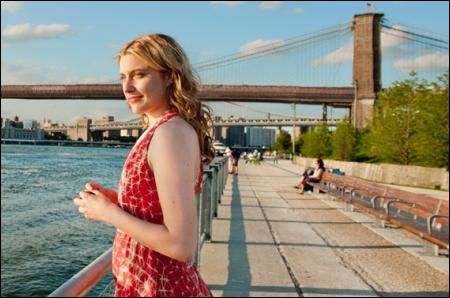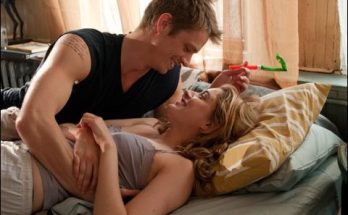Wein was relieved to find himself wearing far fewer hats with LOLA VERSUS than he had on his first feature film, where he and Lister-Jones were involved in everything from costumes and make-up to locations and craft services. He had “only” the roles of director, writer and executive producer to juggle with a full crew to support him, “That really helped me bring the vision to life and focus on the creative aspects,” he says. “When you’re truly independent, you’re flying by the seat of your pants. You aren’t able to spend the time watching performances or thinking about the script. We had so many great people to help us make this movie.”
Bucking the current trend to make independent movies on high-end digital video cameras, Wein was determined to put LOLA VERSUS on 35mm film. “The film has a real level of pop style and theatricality,” London says. “Daryl wanted to make it on film to avoid having it feel like just another low-budget indie movie. Everyone told him he couldn’t afford it, but he was able to find a way.”
“Film has a much richer quality. The grain, the 35mm depth of field and the beautiful lenses we were able to use make the movie look absolutely beautiful,” says Wein. Cinematographer Jakob Ihre, a veteran director of photography in his native Sweden, helped Wein develop a look for the film that reflects Lola’s emotional journey. “We wanted to tell the story in a naturalistic and real way, but at the same time, we didn’t want to be so naturalistic that the story just passed in front of us,” Ihre explains. “The camera and lighting had to be real and sensitive, but also dynamic and grand, to portray and capture the many different moods of Lola. We stayed very much in control of telling the story in a visual way. Part of a scene might be handheld, until a moment comes when Lola changes, so we might switch to a static shot and then a tracking shot, within the same scene. The real challenge was to make such opposite styles work in the same film.”
Ihre also used his camera to introduce New York City into the mix as a character in its own right. “We often used more headroom in the frame to include more of the surrounding scene and bring the audience into the milieu of the characters,” he says. “It helps emphasize what they are going through moment to moment.”
LOLA VERSUS takes place in a version of New York City that might only be familiar to natives. Wein used his intimate knowledge of the city to bypass familiar Manhattan landmarks and choose locations that create an insider’s view of city life. The 19th-century Federal and Greek Revival architecture and cobblestone streets of Brooklyn’s Vinegar Hill neighborhood, as well as the developing waterfront of one of New York City’s premiere arts districts, DUMBO (Down Under the Manhattan Bridge Overpass) provide a glimpse of the city’s past and future, while real apartments on Manhattan’s Lower East Side were used for Lola’s tiny Alphabet City studio and Luke’s three-story walk-up. “We shot at the famous Russ & Daughters smoked fish shop, and no one’s ever shot there before even though it’s been open for 100 years,” says Wein. “We used locations that were authentic, but hadn’t been overexposed in other movies. It gave us a lot more scope and made it feel like a much bigger movie.”
The actors, savvy New Yorkers themselves, say that the filmmakers have captured a real sense of what it’s like to be striving for success in today’s New York City. “Like Daryl and Zoe’s first movie, this is so New York, so generationally accurate and yet so generous to the characters,” says Hamish Linklater. “It’s not ironic or emotionally removed. The people are not too cool for school and neither am I, so I felt like I fit in this world.”
It is in fact the world of young artists like Wein and Lister-Jones, who happily shared their version of New York City with the cast and crew every day during the lunch break. “We couldn’t afford craft services with our budget,” says London. “I looked forward to Daryl and Zoe taking us to restaurants that we would never have known about otherwise, whether it was a hole-in- the-wall Chinese place or a gourmet hipster hangout. I remember walking in somewhere and saying we needed to be in and out in 40 minutes. They looked at us like we were crazy, then put all 14 of us at the chef’s table in the kitchen. We ate one of the best meals of our lives while we argued about script changes.”
Set in the fashion capitol of the United States (if not the world), wardrobe had a crucial role in creating the unique sense of place that permeates LOLA VERSUS, says costume designer Jenny Gering. Quintessential New Yorkers Greta Gerwig and Zoe Lister-Jones brought their own unique personal styles to the way their characters are dressed. “Zoe’s character is fun and flirty, as well as a total slave to fashion, so the way she dresses is her way of expressing herself,” says Gering. “Lola is very like Greta in style, clean and no nonsense. She is not really interested in fashion the way Alice is, but as a born and bred New Yorker, it is second nature to her.”
Next Page: Costume Designs and Wardrobe
Views: 77


